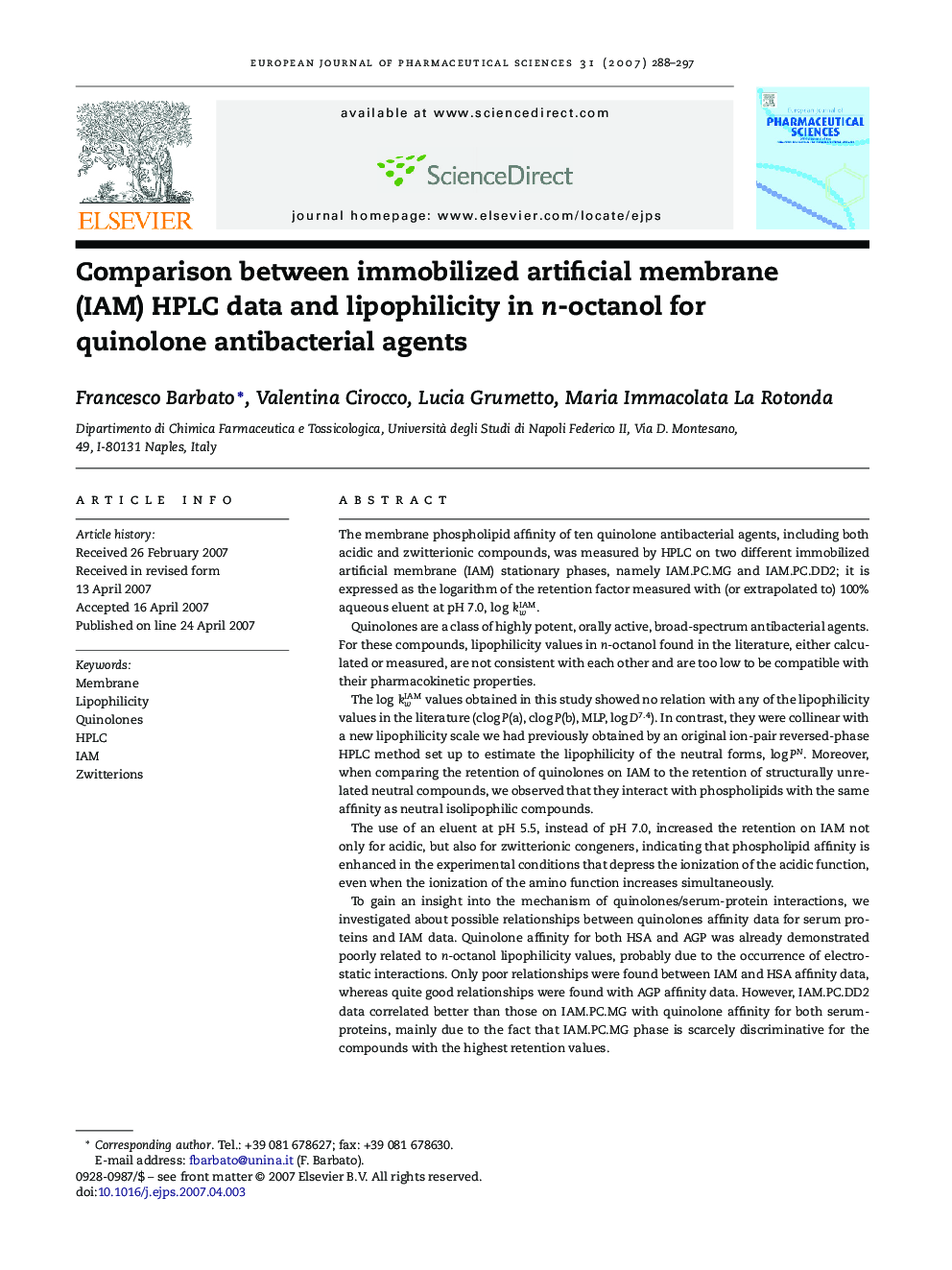| کد مقاله | کد نشریه | سال انتشار | مقاله انگلیسی | نسخه تمام متن |
|---|---|---|---|---|
| 2482466 | 1556281 | 2007 | 10 صفحه PDF | دانلود رایگان |

The membrane phospholipid affinity of ten quinolone antibacterial agents, including both acidic and zwitterionic compounds, was measured by HPLC on two different immobilized artificial membrane (IAM) stationary phases, namely IAM.PC.MG and IAM.PC.DD2; it is expressed as the logarithm of the retention factor measured with (or extrapolated to) 100% aqueous eluent at pH 7.0, log kwIAM.Quinolones are a class of highly potent, orally active, broad-spectrum antibacterial agents. For these compounds, lipophilicity values in n-octanol found in the literature, either calculated or measured, are not consistent with each other and are too low to be compatible with their pharmacokinetic properties.The log kwIAM values obtained in this study showed no relation with any of the lipophilicity values in the literature (clog P(a), clog P(b), MLP, log D7.4). In contrast, they were collinear with a new lipophilicity scale we had previously obtained by an original ion-pair reversed-phase HPLC method set up to estimate the lipophilicity of the neutral forms, log PN. Moreover, when comparing the retention of quinolones on IAM to the retention of structurally unrelated neutral compounds, we observed that they interact with phospholipids with the same affinity as neutral isolipophilic compounds.The use of an eluent at pH 5.5, instead of pH 7.0, increased the retention on IAM not only for acidic, but also for zwitterionic congeners, indicating that phospholipid affinity is enhanced in the experimental conditions that depress the ionization of the acidic function, even when the ionization of the amino function increases simultaneously.To gain an insight into the mechanism of quinolones/serum-protein interactions, we investigated about possible relationships between quinolones affinity data for serum proteins and IAM data. Quinolone affinity for both HSA and AGP was already demonstrated poorly related to n-octanol lipophilicity values, probably due to the occurrence of electrostatic interactions. Only poor relationships were found between IAM and HSA affinity data, whereas quite good relationships were found with AGP affinity data. However, IAM.PC.DD2 data correlated better than those on IAM.PC.MG with quinolone affinity for both serum-proteins, mainly due to the fact that IAM.PC.MG phase is scarcely discriminative for the compounds with the highest retention values.The results suggest that IAM retention can produce a lipophilicity scale that, unlike solvent/water partition coefficients, is consistent with the pharmacokinetic behaviour of zwitterionic quinolones.
Journal: European Journal of Pharmaceutical Sciences - Volume 31, Issue 5, August 2007, Pages 288–297